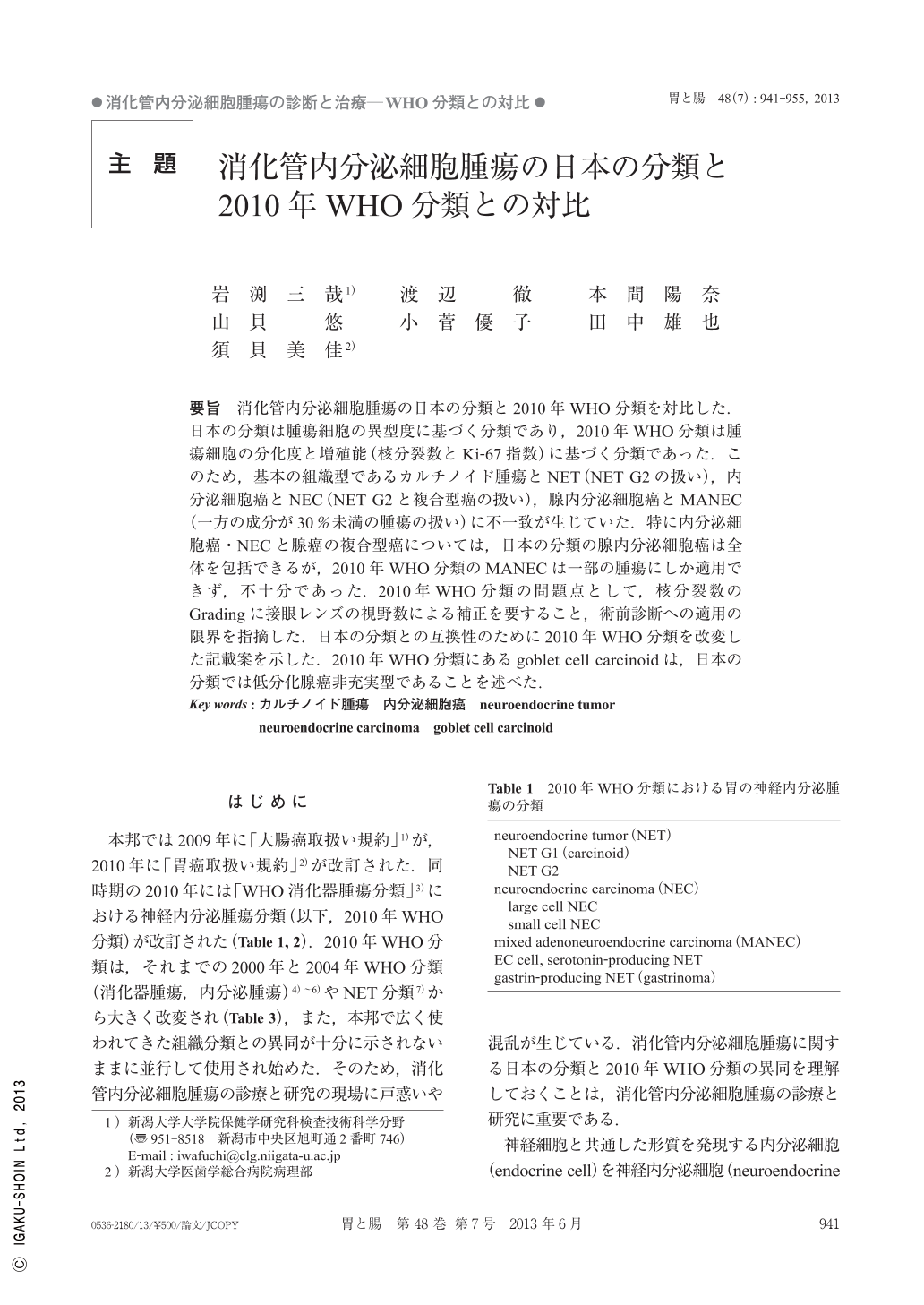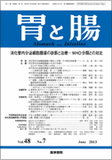Japanese
English
- 有料閲覧
- Abstract 文献概要
- 1ページ目 Look Inside
- 参考文献 Reference
- サイト内被引用 Cited by
要旨 消化管内分泌細胞腫瘍の日本の分類と2010年WHO分類を対比した.日本の分類は腫瘍細胞の異型度に基づく分類であり,2010年WHO分類は腫瘍細胞の分化度と増殖能(核分裂数とKi-67指数)に基づく分類であった.このため,基本の組織型であるカルチノイド腫瘍とNET(NET G2の扱い),内分泌細胞癌とNEC(NET G2と複合型癌の扱い),腺内分泌細胞癌とMANEC(一方の成分が30%未満の腫瘍の扱い)に不一致が生じていた.特に内分泌細胞癌・NECと腺癌の複合型癌については,日本の分類の腺内分泌細胞癌は全体を包括できるが,2010年WHO分類のMANECは一部の腫瘍にしか適用できず,不十分であった.2010年WHO分類の問題点として,核分裂数のGradingに接眼レンズの視野数による補正を要すること,術前診断への適用の限界を指摘した.日本の分類との互換性のために2010年WHO分類を改変した記載案を示した.2010年WHO分類にあるgoblet cell carcinoidは,日本の分類では低分化腺癌非充実型であることを述べた.
Japanese and 2010 WHO classifications of endocrine cell tumors of the digestive tract were compared. The former was based on atypical grade of tumor cells. The latter was based on tumor cell differentiation and proliferation activity(mitotic counts and Ki-67 index). The difference was found between carcinoid tumor and neuroendocrine tumor, between endocrine cell carcinoma and neuroendocrine carcinoma, and between adenoendocrine cell carcinoma and mixed adenoneuroendocrine carcinoma. Adenoendocrine cell carcinoma comprised the composite tumors of endocrine cell carcinoma/neuroendocrine carcinoma and adenocarcinoma. But, mixed adenoneuroendocrine carcinoma included only part of them. Grading of mitotic counts of 2010 WHO classification should be used considering to the difference of field area of view under high power field(magnification : ×400)related to the field number of the ocular lens of microscopy. Goblet cell carcinoid in 2010 WHO classification of the appendix should be diagnosed as poorly differentiated adenocarcinoma, non-solid type in Japanese classification.

Copyright © 2013, Igaku-Shoin Ltd. All rights reserved.


